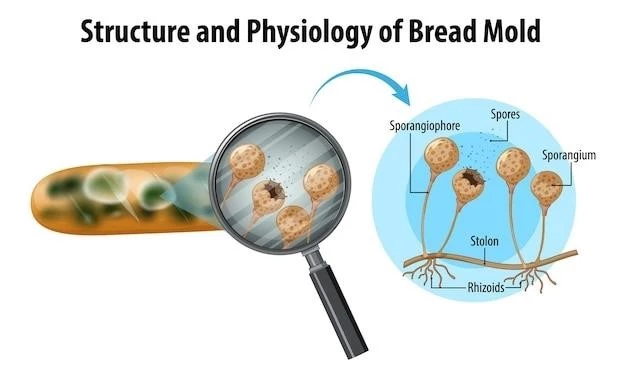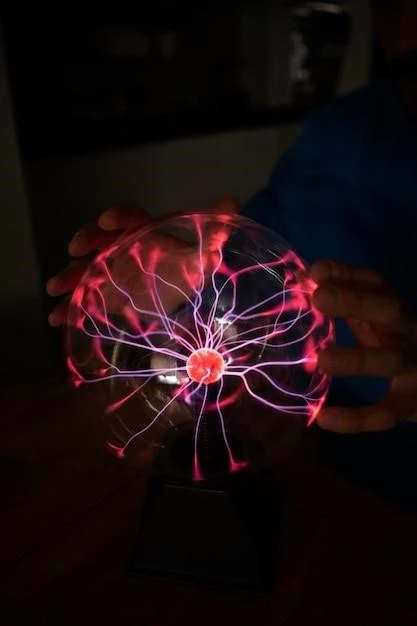Background Primitive neuroectodermal tumors are extremely rare and highly aggressive malignant small round cell tumors that arise from the primitive nerve cells of the nervous system or outside it. These tumors share similar histology, immunohistologic characteristics, and cytogenetics with Ewing’s sarcoma.
Primitive neuroectodermal tumor is a malignant neoplasm that demonstrates cellular differentiation that recapitulates cell types of the central nervous system. These tumors usually occur in children and young adults under 25 years of age.
Primitive neuroectodermal tumors (PNETs) are rare malignant tumors thought to arise from the primitive nerve cells of the nervous system, with clinical manifestations and pathologic similarities with other small, round cell tumors.
Primitive neuroectodermal tumors, including those that mimic neoplasms of the CNS, are a group of cancers that start in nerve cells formed in the fetus during early development but have not differentiated correctly.
Primitive Neuroectodermal Tumor, also known as PNET, is a rare and highly malignant small round cell tumor that can arise in various locations, including the central or peripheral nervous system. These tumors commonly occur in children and adolescents.
Primitive neuroectodermal tumor (PNET) originates from undifferentiated small round cell malignant cells of neuroectodermal origin and can occur in the CNS, surrounding muscles, bones, and other tissues.
Definition and Characteristics
Primitive Neuroectodermal Tumors (PNETs) are rare and highly aggressive malignant small round cell tumors that can originate from primitive nerve cells of the nervous system or outside it. These tumors are characterized by poor differentiation and fast growth, often occurring in children and young adults. PNETs share similar features with Ewing’s sarcoma and demonstrate cellular differentiation that mimics various cell types of the central nervous system.
Classification of Primitive Neuroectodermal Tumors
The classification of Primitive Neuroectodermal Tumors (PNETs) distinguishes between central nervous system (CNS) PNETs and peripheral PNETs. Central PNETs occur within the CNS, while peripheral PNETs develop outside the CNS, often manifesting in tissues such as soft tissue and bone.
Central Nervous System (CNS) PNET
Central Nervous System (CNS) Primitive Neuroectodermal Tumors (PNETs) are a subset of PNETs that originate within the central nervous system, including the brain and spinal cord. These tumors are characterized by their rapid growth, high malignancy, and poor differentiation, often occurring in children and young adults. CNS PNETs exhibit cellular differentiation that recapitulates various cell types of the central nervous system.
Peripheral Primitive Neuroectodermal Tumors
Peripheral Primitive Neuroectodermal Tumors (PNETs) are a subset of PNETs that develop outside the central nervous system, often in locations such as soft tissues and bones. Being rare and highly malignant, these tumors consist of small round cells of neuroectodermal origin. PNETs, including peripheral variants, present with diverse clinical manifestations and share similarities with other small, round cell tumors, requiring specialized diagnostic and treatment approaches.
Diagnosis of Primitive Neuroectodermal Tumors
Primitive Neuroectodermal Tumors (PNETs) can be diagnosed through a variety of tests, including physical examinations, medical history assessments, neurological exams, and imaging studies. Clinical manifestations and pathologic similarities with other small, round cell tumors necessitate specialized diagnostic approaches for accurate identification and treatment planning.
Diagnostic Procedures
Diagnostic procedures for Primitive Neuroectodermal Tumors (PNETs) may involve physical examinations, medical history assessments, neurological exams, and imaging studies such as MRIs and CT scans. These tests help in accurate tumor diagnosis and planning appropriate treatment strategies tailored to the specific characteristics of the tumor.
Treatment Options for Primitive Neuroectodermal Tumors
Primitive Neuroectodermal Tumors (PNETs) often require a combination of surgical interventions, radiation therapy, and chemotherapy for treatment. The specific approach depends on the tumor location, stage, and other factors. Specialized treatment plans are crucial to effectively manage these highly malignant tumors.
Surgical Interventions
Surgical interventions play a crucial role in the treatment of Primitive Neuroectodermal Tumors (PNETs), involving the removal of the tumor mass to the extent feasible without compromising vital functions. Surgeons aim to achieve maximal tumor resection while preserving neurological function, contributing to improved outcomes in conjunction with other treatment modalities such as radiation therapy and chemotherapy.
Radiation Therapy
Radiation therapy is a key component in the treatment of Primitive Neuroectodermal Tumors (PNETs), aiming to target and destroy cancerous cells. This treatment modality is often utilized post-surgery to eliminate any remaining tumor cells and prevent recurrence. Radiation therapy plays a critical role in reducing tumor size, managing symptoms, and improving patient outcomes in conjunction with other treatment modalities.
Chemotherapy
Chemotherapy is a vital component in the comprehensive treatment of Primitive Neuroectodermal Tumors (PNETs), utilizing powerful medications to target and destroy cancer cells. This systemic treatment is often employed to eradicate any residual tumor cells post-surgery or to manage metastasis. Chemotherapy plays a critical role in improving patient outcomes and reducing the risk of tumor recurrence when combined with other therapeutic modalities.
Prognosis and Survival Rates
The prognosis for Primitive Neuroectodermal Tumors (PNETs) is often challenging due to their highly aggressive nature and poor differentiation. The overall 5-year survival rate for PNETs is approximately 53%, highlighting the aggressive behavior of these malignant tumors. Specialized treatment approaches and close monitoring are crucial for managing PNETs effectively.
Factors Affecting Prognosis
Several factors influence the prognosis of patients with Primitive Neuroectodermal Tumors (PNETs), including the extent of tumor resection, tumor location, age of the patient, presence of metastasis, and tumor grade. Additionally, molecular and genetic features play a significant role in predicting treatment response and overall survival rates. Close monitoring and tailored treatment strategies are essential for better prognostic outcomes in individuals with PNETs.
Research and Drug Development for Primitive Neuroectodermal Tumors
Ongoing research focuses on developing targeted therapeutics for Primitive Neuroectodermal Tumors (PNETs) to improve treatment outcomes. Advancements in drug development include novel approaches to target specific molecular mechanisms driving PNET growth and spread. Collaborative research efforts aim to enhance the efficacy of treatment options and potentially increase the overall survival rates for individuals with PNETs.
Therapeutics Under Development
Ongoing research efforts are focusing on the development of novel therapeutics for Primitive Neuroectodermal Tumors (PNETs). These innovative treatment approaches aim to target specific molecular mechanisms involved in PNET growth and progression. Collaborative studies are exploring new drug candidates and treatment strategies to enhance the effectiveness of combating PNETs and potentially improving patient outcomes.
Clinical Presentation of Primitive Neuroectodermal Tumors
Patients with Primitive Neuroectodermal Tumors (PNETs) may present with diverse clinical manifestations depending on the tumor location, such as soft tissues, bones, or the central nervous system. Symptoms may include neurological deficits, pain, and mass effects. Specialized diagnostic procedures are essential for accurate identification and planning appropriate treatment strategies tailored to the individual characteristics of the tumor.
Demographics and Clinical Characteristics
Primitive Neuroectodermal Tumors (PNETs) predominantly affect children and young adults, with manifestations in various locations such as soft tissues, bones, or the central nervous system. Clinical features include neurological deficits, pain, and mass effects, necessitating specialized diagnostic approaches for accurate identification and tailored treatment strategies. The demographics and clinical characteristics of individuals with PNETs play a crucial role in prognosis and treatment planning.
Differential Diagnosis of Primitive Neuroectodermal Tumors
When encountering symptoms suggestive of Primitive Neuroectodermal Tumors (PNETs), healthcare providers consider various differential diagnoses depending on the tumor location. Differential diagnoses may include Ewing’s sarcoma, medulloblastoma, and other small round cell tumors that share histological and cytogenetic characteristics with PNETs. Accurate differentiation is crucial for appropriate treatment planning and optimal patient care.

Molecular and Genetic Features of Primitive Neuroectodermal Tumors
Primitive Neuroectodermal Tumors (PNETs) exhibit diverse molecular and genetic characteristics, reflecting their origin from undifferentiated neuroectodermal cells. These tumors display specific gene mutations and chromosomal abnormalities that contribute to their aggressive behavior and potential treatment responses. Understanding the molecular and genetic profile of PNETs is crucial for developing targeted therapies and improving patient outcomes.
Specific types of Primitive Neuroectodermal Tumors include Pineoblastoma located in the pineal region, Medulloblastoma in the cerebellum, and Cerebral Cortex PNET in the cerebral cortex. These distinct tumor types are characterized by their unique locations and molecular features.
Specific Types of Primitive Neuroectodermal Tumors
Within the realm of Primitive Neuroectodermal Tumors (PNETs), specific types include Pineoblastoma found in the pineal region, Medulloblastoma located in the cerebellum, and Cerebral Cortex PNET situated in the cerebral cortex. These distinct subtypes exhibit unique characteristics based on their anatomical locations and molecular profiles.
Medulloblastoma
Medulloblastoma is a specific type of Primitive Neuroectodermal Tumor (PNET) that primarily arises in the cerebellum of the brain. It is characterized by distinct clinical and molecular features that differentiate it from other PNET subtypes. Treatment strategies for Medulloblastoma may vary based on its location and genetic characteristics.

Emergence of Embryonal Tumors from Primitive Neuroectodermal Tumors
Embryonal tumors can emerge from Primitive Neuroectodermal Tumors (PNETs), representing a transition to a more differentiated state in tumor progression. These embryonal tumors may exhibit distinct molecular and histological features compared to their precursor PNETs, underscoring the complexity of tumor evolution and the importance of tailored treatment strategies.
Current Perspectives on Primitive Neuroectodermal Tumors
Current perspectives on Primitive Neuroectodermal Tumors (PNETs) reflect the rare and highly aggressive nature of these malignant small round cell tumors. Advances in understanding the molecular and genetic features of PNETs contribute to tailored treatment strategies aimed at improving patient outcomes. Ongoing research and collaborative efforts focus on developing innovative therapies to enhance the management of PNETs and potentially increase survival rates.
Case Studies and Clinical Findings
Case studies and clinical findings shed light on the complexity of Primitive Neuroectodermal Tumors (PNETs). These reports provide valuable insights into the diagnostic challenges and treatment strategies implemented for individuals with PNETs. By analyzing real-world cases, healthcare professionals gain a deeper understanding of the varied presentations and outcomes associated with this rare and aggressive type of cancer.
Recent Developments in the Diagnosis and Treatment of Primitive Neuroectodermal Tumors
Recent advancements in diagnosing and treating Primitive Neuroectodermal Tumors (PNETs) have focused on leveraging molecular and genetic insights for personalized therapies. Innovative diagnostic imaging techniques and targeted treatment modalities tailored to the genetic profiles of PNETs have shown promise in improving patient outcomes and guiding more effective management strategies.
Future Directions in Research and Management of Primitive Neuroectodermal Tumors
Future directions in the research and management of Primitive Neuroectodermal Tumors (PNETs) involve advancing personalized therapies based on molecular insights. Researchers are focused on developing targeted treatments tailored to the genetic characteristics of PNETs for improved patient outcomes. Continued exploration of innovative diagnostic tools and therapeutic approaches aims to enhance the management of PNETs and potentially elevate survival rates in affected individuals.
